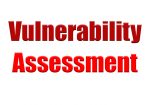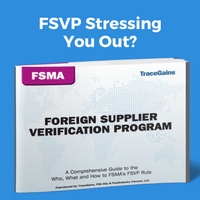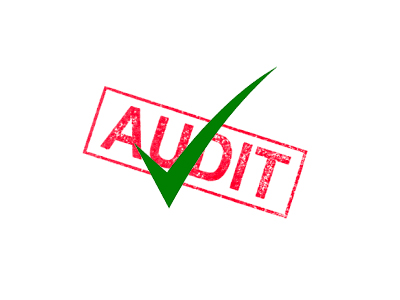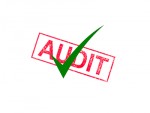Pests can be sneaky. Many can compromise food products without anyone realizing they’re present. This is bad news for food processing facilities where an abundance of food products can translate into high pest pressure.
Beetles and moths are two of the main offenders in this environment and are referred to as stored product pests. These creatures can cause safety and legal concerns if they find their way into products, as they are quite adept at doing. They can damage packaging and cause product contamination or alter the taste of products when they secrete chemicals from their bodies, as many do.
This is not only a concern for your business’s reputation and bottom line, but could cost you major points on your next audit. Especially under the new FSMA regulations, prevention must be the emphasis in all U.S. facilities. This represents a shift from previous regulations as the new ones require risk-based preventive controls.

The best way to prevent stored product pests and adhere to FSMA regulations is by implementing an integrated pest management (IPM) program. IPM programs focus on proactively preventing pests by inspection, monitoring and eliminating conditions that attract or harbor them using tactics like exclusion and sanitation, using chemicals only as a last resort. Under FSMA, you need to identify potential roadblocks and actively work to remove them. Showing constant improvement over time is an absolute must.
These programs also call for comprehensive documentation to monitor pest issues and ensure improvements are made over time. Auditors love to see documentation, as it shows that you are consciously working to strengthen your pest management efforts with continual improvement. If your facility doesn’t have an IPM program, it’s time to make a change sooner rather than later.
To successfully prevent stored product pests, you need to understand what they are and why they are attracted to your facility.
Types of Stored Product Pests
There are many different species of stored product pests, but they can be classified by four main categories based on their biology and habits:
- Scavengers: Eat just about anything, even if other pests have been there first. Pests in this category include the red flour beetle and sawtoothed grain beetle.
- External feeders: Feed on the exterior of cereal (grain) and kernel products and work their way inside. Pests in this category include Indian meal moths and cigarette beetles.
- Internal feeders: Lay eggs in the grain and feed on kernels from inside. Pests in this category include granary weevils, lesser grain borers and Angoumois grain moths.
- Secondary feeders: Eat from the outside in and consume moldy and damp food products. Pests in this category include spider beetles and fungus beetles.
How do you know if you have stored product pests? An infestation becomes apparent when the pests can be observed crawling or flying around. At this point, it’s important to identify the specific species that is plaguing your facility, as this will dictate the appropriate treatment method. A trained professional can help correctly identify the species and recommend the best course of action to resolve the problem. Stored product pests reproduce quickly, so it’s critical to address any infestations before they have time to multiply and contaminate additional product.
The most common stored product pests are:
- Sawtoothed Grain Beetle. Can burrow directly through boxes and packaging, so even sealed foods are at risk. They prefer processed food products like bran, chocolate, oatmeal, sugar and macaroni.
- Indian Meal Moths. One of the most common pests for food processing facilities, the larva feeds on a large variety of different products. Some distinctive signs of an infestation are silk webbing and frass near the surface of the product.
- Cigarette and Drugstore Beetles. Also able to chew through packaging, these beetles prefer pet food, spices, tobacco and any packaged food.
- Granary and Rice Weevils. Prefer whole grains or seed products like popcorn, birdseed and nuts. They are recognizable by a snout protruding from their head and their reddish-brown bodies. Grains infested by weevils will be hollow and have small holes.
- Spider Beetles. Similar to small spiders in appearance, they prefer grains, seeds, dried fruits and meats. They often accompany a rodent infestation because they prefer grain products that are old and moist.
Prevention Tactics
To help prevent stored product pests, incorporate the following tactics as part of your IPM program:
- Closely inspect incoming shipments and packages. Look for the signs of stored product pests, like webbing, larvae and live adult insects. Check for signs of damage, especially for holes that can be caused by boring pests. To monitor for pests entering in this way, a quality assurance sample should be placed in a closed, labeled plastic container for later observations to see if any activity is noticed. This will give you a better idea if pests are present and what types may be being introduced via the incoming shipment.
- Use of pheromone traps. These are the best tool to monitor the pest activity. These traps can also be placed in transportation vehicles to see if the trucks have a resident stored product pest population.
- Use temperature as a repellant. Most stored product pests cannot live in extreme temperatures. If storage rooms can be maintained at 60°F or lower, stored product pests won’t be able to establish themselves inside.
- Practice the first-in, first-out (FIFO) approach for products. Deteriorating products are an invitation to stored product pests, so make sure that older products go first and remove any with damages. It is also best to store products off the floor and more than 18 inches from walls, as it makes it easier to clean the surrounding area.
- Create a sanitation schedule. Keeping a facility free of food debris will go a long way in eliminating attractants for pests. Clean up product spills immediately, and vacuum and wipe down everything on a regular basis. Don’t forget the cracks and crevices!
Keep in mind that being proactive is an important part of this entire process. If you see something, say something. Resolving pest issues as quickly as possible will be beneficial in the long run, as infestations are naturally more difficult to remove and could cost your facility dearly during an audit. A pest management professional will be able to point out the hot spots around a facility and can help to ensure that proactive prevention tactics are in place before anything gets out of hand. If any products are compromised, discard them immediately.
Pest Management: A Team Effort
The stakes are high in the food processing environment, which means pest control must be a priority. The most successful pest control programs are a team effort. Form a strong partnership with your pest management provider and work closely with them throughout the year to proactively prevent pest problems. Reach out to them early and often if you suspect any issues.
It’s also important that your entire staff is aware of pest management initiatives and tactics, which is why many pest management providers offer free staff training courses upon request. Take advantage of the resources available through your provider.
Working with a pest management provider to create a customized, IPM plan will help prevent pests and in turn protect the quality of your products and your business.






















